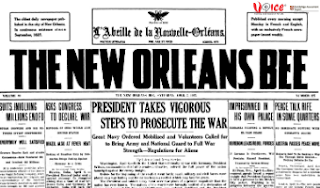Effective Business Writing
Some
business mails lack lustre, some convey confused decisions and a lot more are
lengthy pieces of information .A Business communication needs to be clear
and persuasive. This article takes one through some of the most important sills
needed when communicating in writing in the business domain.
Essentials of your Business English writing skills
Business Emails
Remember,
the recipient of your email is going to be a) a very busy person and b)
somebody in receipt of many emails each day. The following key points will help
you to improve your writing skills in emails:
Be
clear
Be
concise
Make
your emails actionable
Remember
not to waste words with an elaborate greeting or even a context, get straight
to the point with short sentences or bullet points.
Start
with your heading, or subject. Keep it to eight words maximum in a way that
will tell the reader what you are writing about.
Take a look at this example:
Meeting at 3.00pm For All. Conference Room.
There
can be no doubt about that.
Secondly,
think about what you want to communicate. When you have written your email,
edit it before sending to make sure that you are not wasting words.
For example: MD is holding a meeting to discuss
sales figures. They are down by 12% over the last month.
Make
it clear what actions are needed, naming precisely who needs to do what. If there is a link, give the URL; don’t refer
back to a previous email. Remember, it is all about allowing the recipient to
know what they need to know in the shortest way possible.
An example of this is:
All
staff will need their monthly forecasts for the next three months. They will
also need their sales figures for last month.
Jane – please bring the overview on sales; Bill: please bring the latest
figures from the competition. Everybody should read the sales column of August
News letter before attending.
Short,
sweet but informative, the recipe for the perfect business email.
Business
Letters
Some
of the same rules apply, but a business letter is a more formal way of
communicating. If you are seeking how to improve writing skills in formal
letters, the following guidance will help you.
Firstly,
make sure that you follow the correct English format. Many businessmen and
women are old school and value correctly laid out letters.
Use
business headed paper, or if you do not have this, writes your address in the
top right-hand side. Level with where the heading or your address finishes, you
should write the name and address of the recipient. This will be on the
left-hand side, and will have the date underneath.
If
you do not know the person to whom you are writing, you should begin the letter
with: Dear Sir or Dear Sir/Madam. This kind of letter ends with: Yours faithfully,
then your name and signature. If you do know the person you are writing to then
you may begin the letter with: Dear Mrs Smith or Dear Jack. As it is a formal,
business letter this form should end with: Yours sincerely, then your name and
signature.
The
content of the letter should be formal, but not unfriendly. It should give a
context at the beginning:
Dear
Sir,
I
am writing with reference to your recent request for information regarding
changes to transport links in your region.
It
should satisfy the purpose of the letter:
I
can confirm that the new railway station will open on January 9th, and that
buses on route 62, which pass your office, will stop at the station. It is
expected that the new station will increase traffic in the area and your
clients may therefore need more time to reach your office, and find parking
space.
The
letter should end in a way that allows the recipient to seek more information
if needed:
I
hope that this answers your question and I am happy for you to telephone me at
the number above if you have further concerns.
Be
it emails, letters, advertisements or other forms of communications, most
business writing seeks to make clients wish to use your business services or
products more often.



Comments
Post a Comment